1-Methyl-1-phenyl-thiourea
Modify Date: 2024-01-06 13:37:30

1-Methyl-1-phenyl-thiourea structure
|
Common Name | 1-Methyl-1-phenyl-thiourea | ||
|---|---|---|---|---|
| CAS Number | 4104-75-0 | Molecular Weight | 166.24300 | |
| Density | 1.221g/cm3 | Boiling Point | 267.1ºC at 760 mmHg | |
| Molecular Formula | C8H10N2S | Melting Point | 99 °C | |
| MSDS | N/A | Flash Point | 115.3ºC | |
| Name | 1-methyl-1-phenylthiourea |
|---|---|
| Synonym | More Synonyms |
| Density | 1.221g/cm3 |
|---|---|
| Boiling Point | 267.1ºC at 760 mmHg |
| Melting Point | 99 °C |
| Molecular Formula | C8H10N2S |
| Molecular Weight | 166.24300 |
| Flash Point | 115.3ºC |
| Exact Mass | 166.05600 |
| PSA | 61.35000 |
| LogP | 2.06670 |
| Index of Refraction | 1.679 |
Synonym: Section 2 - COMPOSITION, INFORMATION ON INGREDIENTS
Risk Phrases: 20/21/22 Section 3 - HAZARDS IDENTIFICATION EMERGENCY OVERVIEW
Harmful by inhalation, in contact with skin and if swallowed. Potential Health Effects Eye: May cause eye irritation. Skin: May cause skin irritation. Harmful if absorbed through the skin. Ingestion: Harmful if swallowed. May cause irritation of the digestive tract. Inhalation: Harmful if inhaled. May cause respiratory tract irritation. Chronic: Not available. Section 4 - FIRST AID MEASURES Eyes: Flush eyes with plenty of water for at least 15 minutes, occasionally lifting the upper and lower eyelids. Get medical aid. Skin: Get medical aid. Flush skin with plenty of water for at least 15 minutes while removing contaminated clothing and shoes. Ingestion: Get medical aid. Wash mouth out with water. Inhalation: Remove from exposure and move to fresh air immediately. If not breathing, give artificial respiration. If breathing is difficult, give oxygen. Get medical aid. Notes to Physician: Section 5 - FIRE FIGHTING MEASURES General Information: As in any fire, wear a self-contained breathing apparatus in pressure-demand, MSHA/NIOSH (approved or equivalent), and full protective gear. Extinguishing Media: Use water spray, dry chemical, carbon dioxide, or chemical foam. Section 6 - ACCIDENTAL RELEASE MEASURES General Information: Use proper personal protective equipment as indicated in Section 8. Spills/Leaks: Vacuum or sweep up material and place into a suitable disposal container. Section 7 - HANDLING and STORAGE Handling: Avoid breathing dust, vapor, mist, or gas. Avoid contact with skin and eyes. Storage: Store in a cool, dry place. Store in a tightly closed container. Section 8 - EXPOSURE CONTROLS, PERSONAL PROTECTION Engineering Controls: Use adequate ventilation to keep airborne concentrations low. Exposure Limits CAS# 4104-75-0: Personal Protective Equipment Eyes: Not available. Skin: Wear appropriate protective gloves to prevent skin exposure. Clothing: Wear appropriate protective clothing to prevent skin exposure. Respirators: Follow the OSHA respirator regulations found in 29 CFR 1910.134 or European Standard EN 149. Use a NIOSH/MSHA or European Standard EN 149 approved respirator if exposure limits are exceeded or if irritation or other symptoms are experienced. Section 9 - PHYSICAL AND CHEMICAL PROPERTIES Physical State: Solid Color: pale yellow Odor: Not available. pH: Not available. Vapor Pressure: Not available. Viscosity: Not available. Boiling Point: Not available. Freezing/Melting Point: 101 - 103 deg C Autoignition Temperature: Not available. Flash Point: Not available. Explosion Limits, lower: Not available. Explosion Limits, upper: Not available. Decomposition Temperature: Solubility in water: Specific Gravity/Density: Molecular Formula: C8H10N2S Molecular Weight: 166 Section 10 - STABILITY AND REACTIVITY Chemical Stability: Not available. Conditions to Avoid: Incompatible materials. Incompatibilities with Other Materials: Strong oxidizing agents, acids. Hazardous Decomposition Products: Nitrogen oxides, carbon monoxide, oxides of sulfur, carbon dioxide. Hazardous Polymerization: Not available. Section 11 - TOXICOLOGICAL INFORMATION RTECS#: CAS# 4104-75-0 unlisted. LD50/LC50: Not available. Carcinogenicity: N-Methyl-N-phenylthiourea - Not listed by ACGIH, IARC, or NTP. Section 12 - ECOLOGICAL INFORMATION Section 13 - DISPOSAL CONSIDERATIONS Dispose of in a manner consistent with federal, state, and local regulations. Section 14 - TRANSPORT INFORMATION IATA Shipping Name: TOXIC SOLID, ORGANIC, N.O.S.* Hazard Class: 6.1 UN Number: 2811 Packing Group: III IMO Shipping Name: TOXIC SOLID, ORGANIC, N.O.S. Hazard Class: 6.1 UN Number: 2811 Packing Group: III RID/ADR Shipping Name: TOXIC SOLID, ORGANIC, N.O.S. Hazard Class: 6.1 UN Number: 2811 Packing group: III Section 15 - REGULATORY INFORMATION European/International Regulations European Labeling in Accordance with EC Directives Hazard Symbols: XN Risk Phrases: R 20/21/22 Harmful by inhalation, in contact with skin and if swallowed. Safety Phrases: S 37/39 Wear suitable gloves and eye/face protection. WGK (Water Danger/Protection) CAS# 4104-75-0: No information available. Canada None of the chemicals in this product are listed on the DSL/NDSL list. CAS# 4104-75-0 is not listed on Canada's Ingredient Disclosure List. US FEDERAL TSCA CAS# 4104-75-0 is not listed on the TSCA inventory. It is for research and development use only. SECTION 16 - ADDITIONAL INFORMATION N/A |
| Hazard Codes | Xn:Harmful; |
|---|---|
| Risk Phrases | R20/21/22 |
| Safety Phrases | S26-S36/37/39 |
| RIDADR | UN2811 |
| Packaging Group | II |
| Hazard Class | 6.1 |
| HS Code | 2930909090 |
| Precursor 9 | |
|---|---|
| DownStream 10 | |
| HS Code | 2930909090 |
|---|---|
| Summary | 2930909090. other organo-sulphur compounds. VAT:17.0%. Tax rebate rate:13.0%. . MFN tariff:6.5%. General tariff:30.0% |
| MFCD00086629 |
| N-methyl-N-phenylthiourea |
| N-methylphenyl urea |
| EINECS 223-877-3 |
| 1-methyl-1-phenyl-thiourea |
| N-Methyl-N-phenyl-thioharnstoff |
 CAS#:532-55-8
CAS#:532-55-8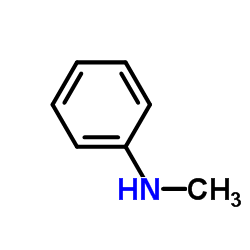 CAS#:100-61-8
CAS#:100-61-8![N-[methyl(phenyl)carbamothioyl]benzamide Structure](https://image.chemsrc.com/caspic/437/4949-94-4.png) CAS#:4949-94-4
CAS#:4949-94-4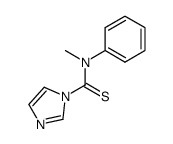 CAS#:55246-66-7
CAS#:55246-66-7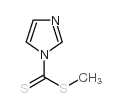 CAS#:74734-11-5
CAS#:74734-11-5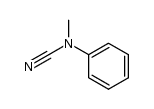 CAS#:18773-77-8
CAS#:18773-77-8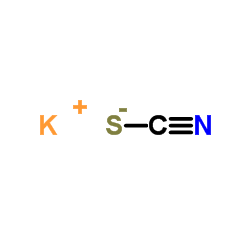 CAS#:333-20-0
CAS#:333-20-0 CAS#:6544-02-1
CAS#:6544-02-1![[triphenyl(thiocyanato)-λ5-phosphanyl] thiocyanate Structure](https://image.chemsrc.com/caspic/128/66365-41-1.png) CAS#:66365-41-1
CAS#:66365-41-1 CAS#:102-08-9
CAS#:102-08-9 CAS#:16954-69-1
CAS#:16954-69-1![1-[2-(N-methylanilino)-4-phenyl-1,3-thiazol-5-yl]ethanone structure](https://image.chemsrc.com/caspic/031/111753-03-8.png) CAS#:111753-03-8
CAS#:111753-03-8 CAS#:1007-36-9
CAS#:1007-36-9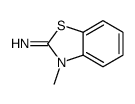 CAS#:14779-16-9
CAS#:14779-16-9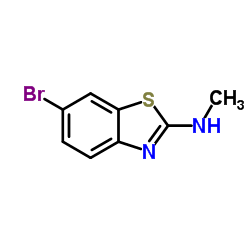 CAS#:75104-92-6
CAS#:75104-92-6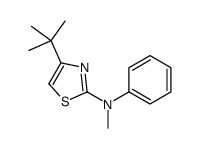 CAS#:82721-93-5
CAS#:82721-93-5![3-benzyl-1-[benzylsulfanyl-(methyl-phenyl-amino)methylidene]thiourea structure](https://image.chemsrc.com/caspic/227/84919-08-4.png) CAS#:84919-08-4
CAS#:84919-08-4![1-[benzylsulfanyl-(methyl-phenyl-amino)methylidene]-3-(3-methylphenyl)thiourea structure](https://image.chemsrc.com/caspic/296/84919-11-9.png) CAS#:84919-11-9
CAS#:84919-11-9